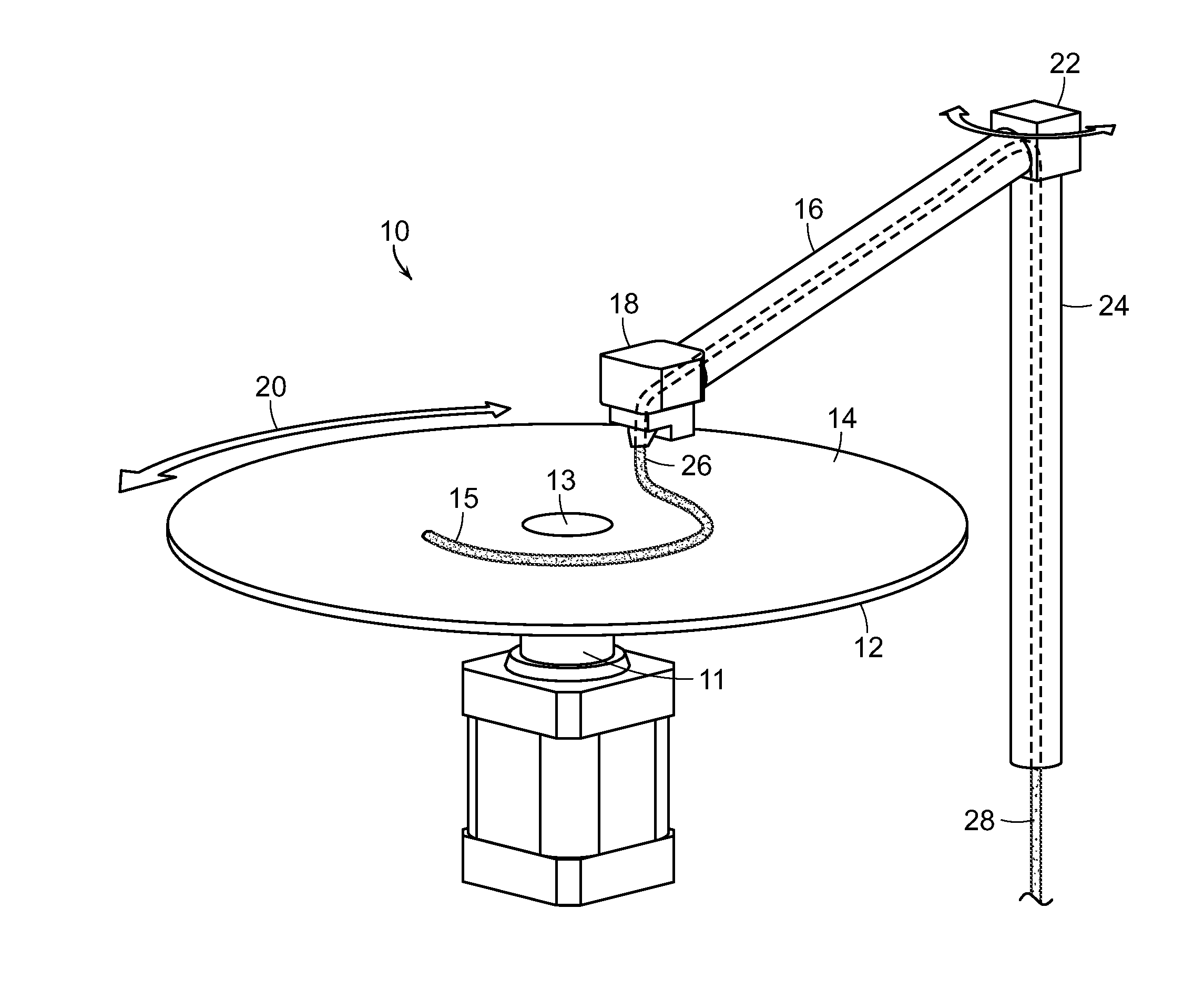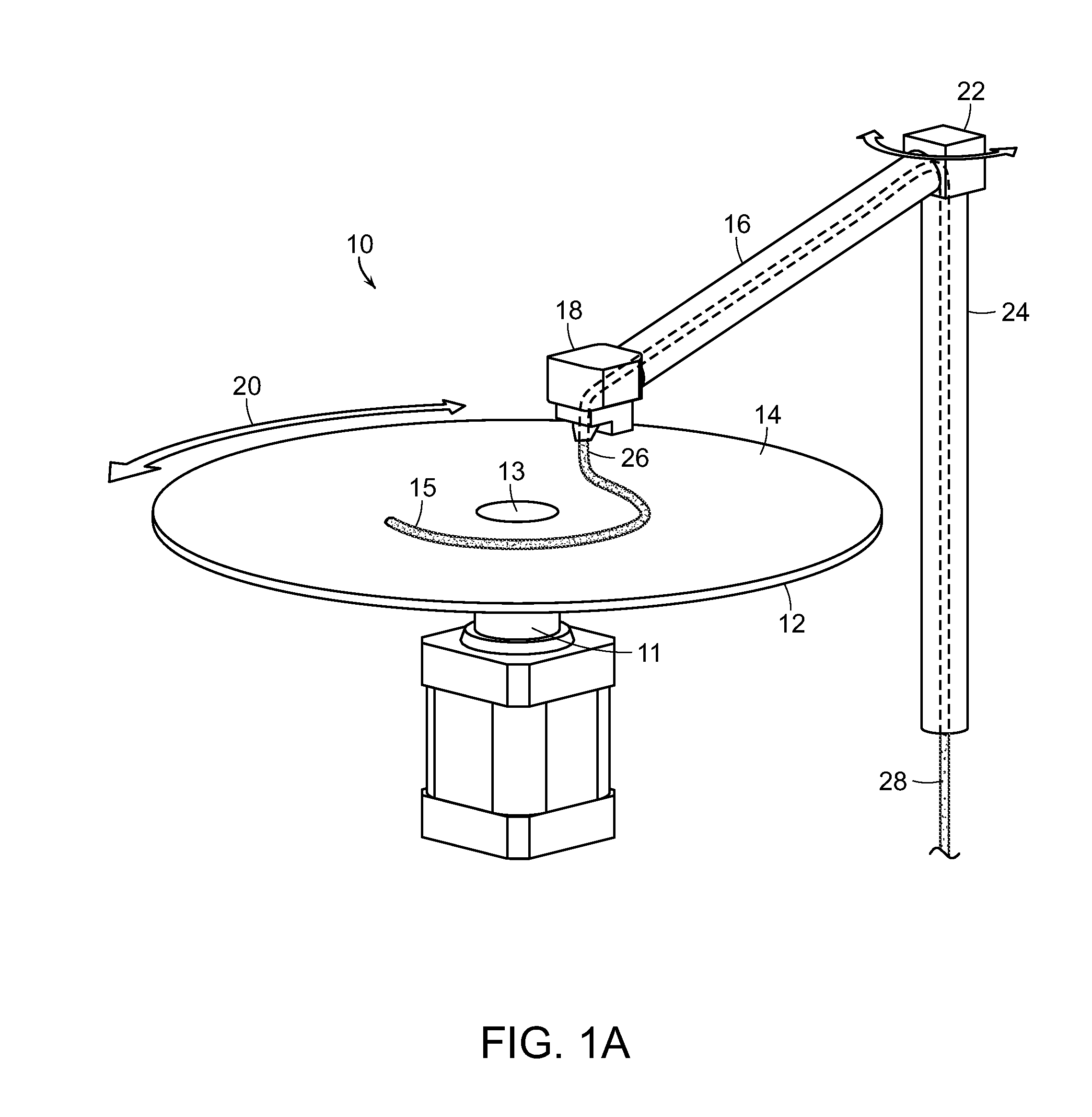3D printer system having a rotatable platform, metal flake filament, multiple heaters, and modularity
a 3d printer and platform technology, applied in the field of 3d printing, can solve the problems of reducing the productivity of the 3d printing process, difficult to get the extruded plastic filament to adhere to the printing surface, and slow fabrication speed
- Summary
- Abstract
- Description
- Claims
- Application Information
AI Technical Summary
Benefits of technology
Problems solved by technology
Method used
Image
Examples
Embodiment Construction
[0025]The present invention is directed to a system and method for 3D printing in an improved and more efficient manner. This invention includes a spinning disc and eliminates some of the motor complexity found in the prior art. This invention vastly improves the speed of prototyping, creation, and fabrication using 3D printers.
[0026]As depicted in FIG. 1A, the inventive system 10, includes a rotating platform 12 having a central point 13 and a surface 14. A radial printer arm 16 having an extruder nozzle 18 extends over the platform 12. The rotating platform 12 provides the surface 14 upon which the object 15 being printed is formed. The platform 12 is mounted upon a shaft 11 or similar support at the central point 13 that may spin, rotate, or oscillate to transfer that same motion to the platform 12.
[0027]Depending upon the shape or form of the objecting being printed, the platform 12 may be rotated in a partial turn, a full turn, or back and forth turns. Arrow 20 indicates spinni...
PUM
| Property | Measurement | Unit |
|---|---|---|
| temperature | aaaaa | aaaaa |
| temperature | aaaaa | aaaaa |
| temperature | aaaaa | aaaaa |
Abstract
Description
Claims
Application Information
 Login to View More
Login to View More - R&D
- Intellectual Property
- Life Sciences
- Materials
- Tech Scout
- Unparalleled Data Quality
- Higher Quality Content
- 60% Fewer Hallucinations
Browse by: Latest US Patents, China's latest patents, Technical Efficacy Thesaurus, Application Domain, Technology Topic, Popular Technical Reports.
© 2025 PatSnap. All rights reserved.Legal|Privacy policy|Modern Slavery Act Transparency Statement|Sitemap|About US| Contact US: help@patsnap.com



